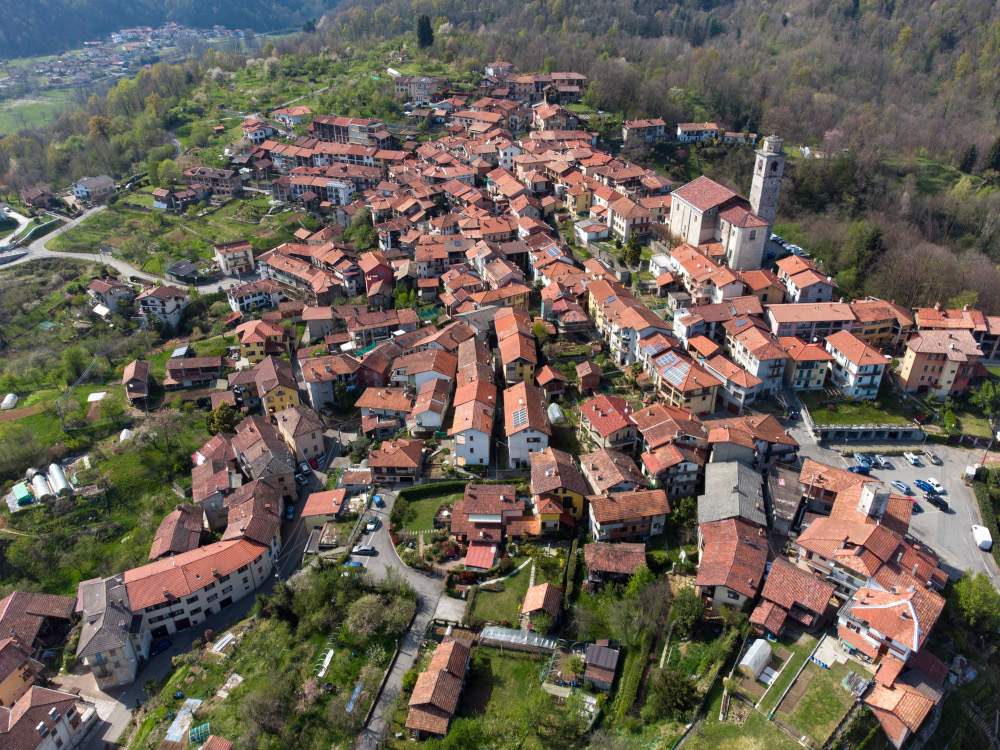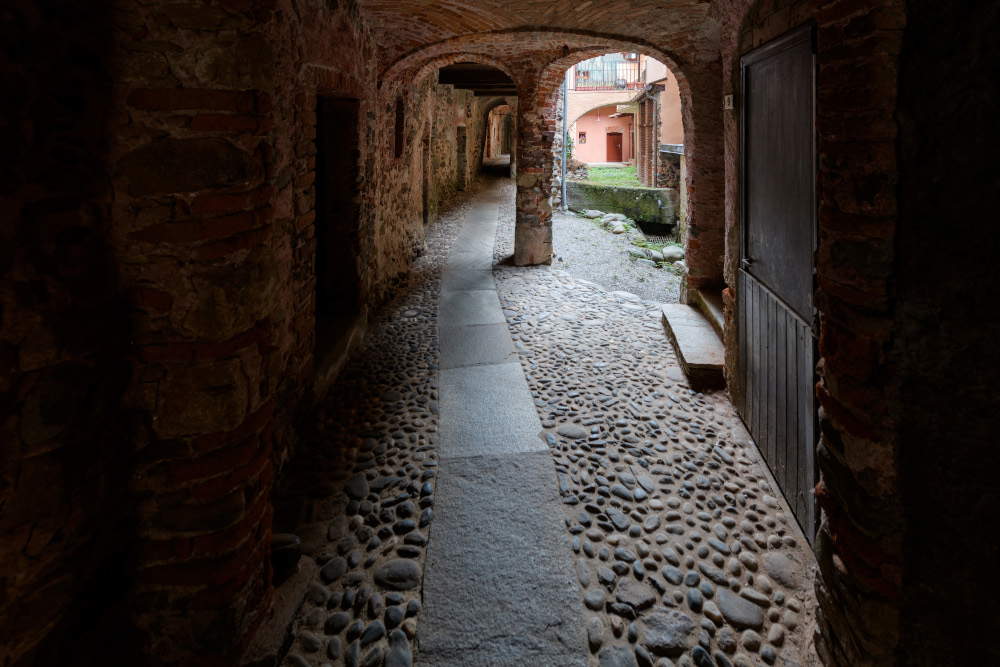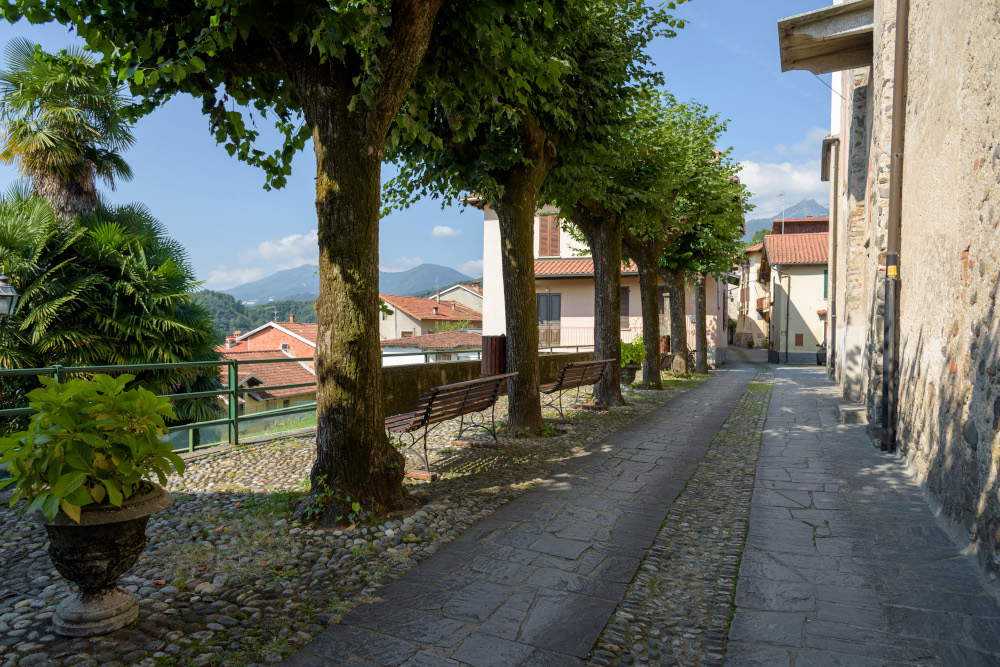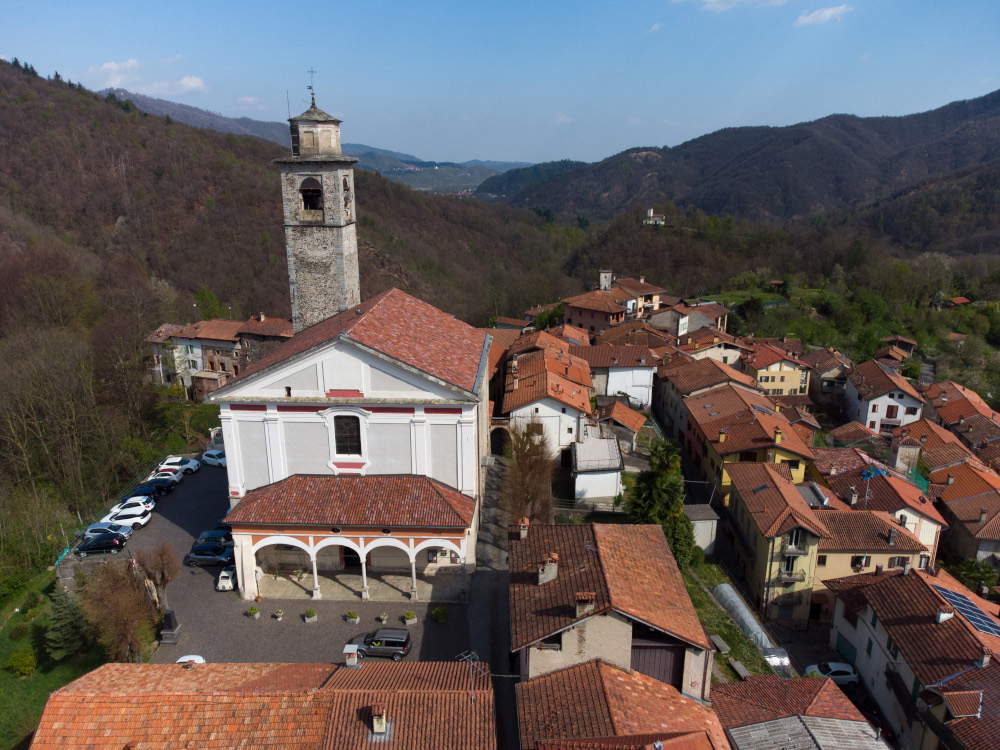Guardabosone, village Museum alive. What to see in the ancient medieval village of Vercelli
In the province of Vercelli, on a scenic hillside between Valsesia and Valsessera, stands Guardabosone, a small village known as the"living museum town." Despite its small size, it offers as many as four museums, a botanical garden and a quaint medieval core. Its origins date back to the year 1000, and its medieval traces can still be recognized in its walls and the presence of characteristic enclosed courtyards. Perhaps the two courtyards between Via Roma and Via Stretta and the one between Via Stretta and Via Crosetto formed the primitive nucleus of Guardabosone, which in 1227 had a population of seven families.
Just outside the village is the Sanctuary of the Madonna del Carretto with its splendid octagonal Baroque exterior chapel known as the Gongora. The shrine was built between 1669 and 1679 to a design by Carlo Gilardi of Campertogno and has precious decorations consisting of stucco and frescoes; a marble frontal is kept inside. The octagonal chapel, considered a national monument, on the other hand, was built by local workers around the pre-existing frescoed pillar and is rich in stucco work both outside and inside.
Moving inside the village, the parish church of Sant’Agata, dating from the 16th century, is worth a visit. It houses valuable carved wooden statues and altars, and the Mazzietti sundial, made in 1880 by Pietro Mazzietti, is still visible on the south side of the church. The sundial looks like a double clock, as the upper part is a clock that marks the hours according to the canons popular in the 19th century, while the lower part is a sundial that marks true noon and the mean noon of the meridian of Rome. To be more precise, the vertical line marks “true” noon in Guardabosone, the straight line slightly inclined to the left of the vertical marks “true” noon in Rome (about 16’48" before local noon). Restored, it is one of the finest 19th-century sundials in the area.
Near the parish church is the Vietti Chapel, probably the chapel of a 15th-century lazaret because of the frescoes inside. Also known as Giset, according to tradition this was the first place of worship in Guardabosone. The frescoes, which can be traced back to the workshop of Tomaso Cagnola, may be ex voto: they depict four times St. Sebastian, Christ with the Cross, the Madonna and Child, and St. Rocco showing the plague plague.
In the upper part of the village, however, is theOratory of Santa Maria or San Rocco, known as the Oratory of the Torni from the name of an old local family. The building was built in 1630 during the plague. The upper part of the altar has a 17th-century architectural layout with two rows of niches, divided by twisted columns topped by edicolettes. The splendid wooden altar that can be admired today in the Museum of Sacred Art belonged to this very oratory.




In addition to the Museum of Sacred Art, also worth seeing in Guardabosone are the Museum of Natural Sciences, the Museum of Ancient Trades and Agricultural Activities, the House of Trades, and thePier Carlo Bussi Botanical Garden; the latter stands on a 5,000-square-meter hill and was established in 1989, thanks to a small group of medicinal herb enthusiasts, for educational, scientific, and flora preservation purposes, especially aromatic and healing herbs. In fact, about four hundred varieties of plants, both ornamental and large-stemmed, as well as numerous species of medicinal plants can be found here. Aquatic and marsh plants are found in a pond and two small ponds. A pyramidal greenhouse has also been built. Recently the Botanical Garden has also become an ornithological station.
The Museum of Natural History is owed to Carlo Locca, who brought together in his collection, over a period of fifty years, relics from the Stone Age and hundreds of stuffed animals. Mammals, fish, reptiles, birds, a collection of thousands of insects and marine shells, fossil evidence from the Primary to Quaternary eras, minerals, and artifacts of early Stone Age civilizations. The museum also includes an outdoor park area with ostriches, llamas, deer and roe deer, as well as an old wine cellar and a core of medieval and late 19th century buildings.
The Museum of Ancient Crafts and Agricultural Activities offers a journey into the ancient traditions of the farming world. Tools formerly used for spinning and weaving hemp craft and for the production of walnut oil are preserved here. There is also an 18th-century wine press. The museum itinerary dedicates its rooms to the processing of hemp, once widely cultivated and used in Valsessera (from sowing to the hand looms that were used to make the rag), and to the processing of walnuts with the production of oil from them.
Finally, the Casa dei Mestieri (House of Trades) is a typical wooden loggia building where the traditional tools of the old craftsmen’s workshops, such as the tinsmith, blacksmith, knife grinder, slipper maker, cobbler, and carpenter, are kept. One of the five largest entomological collections in the world is located here, which runs on the upper floors of the building.
A path also starts from the Oratorio dei Torni and leads to the Church of Our Lady of Loreto, located in a panoramic position on Luppia Hill. It was built in 1852 by the Zandotti brothers, who were pastor and vicar, on a votive pillar from the 17th century.
A small ancient medieval village to spend a day of art, nature and traditions.
 |
| Guardabosone, village Museum alive. What to see in the ancient medieval village of Vercelli |
Warning: the translation into English of the original Italian article was created using automatic tools. We undertake to review all articles, but we do not guarantee the total absence of inaccuracies in the translation due to the program. You can find the original by clicking on the ITA button. If you find any mistake,please contact us.



























